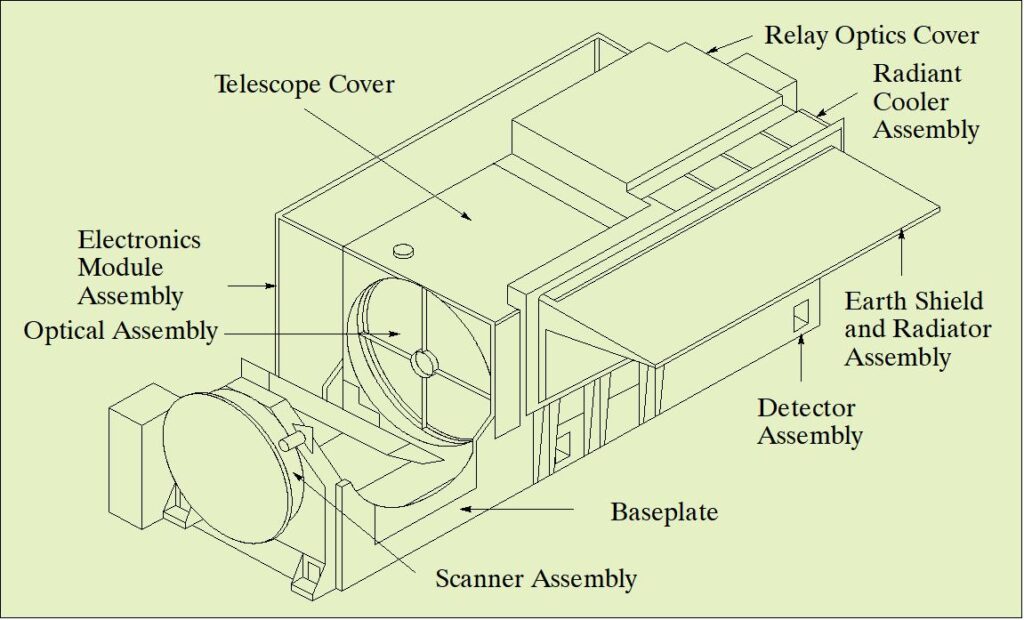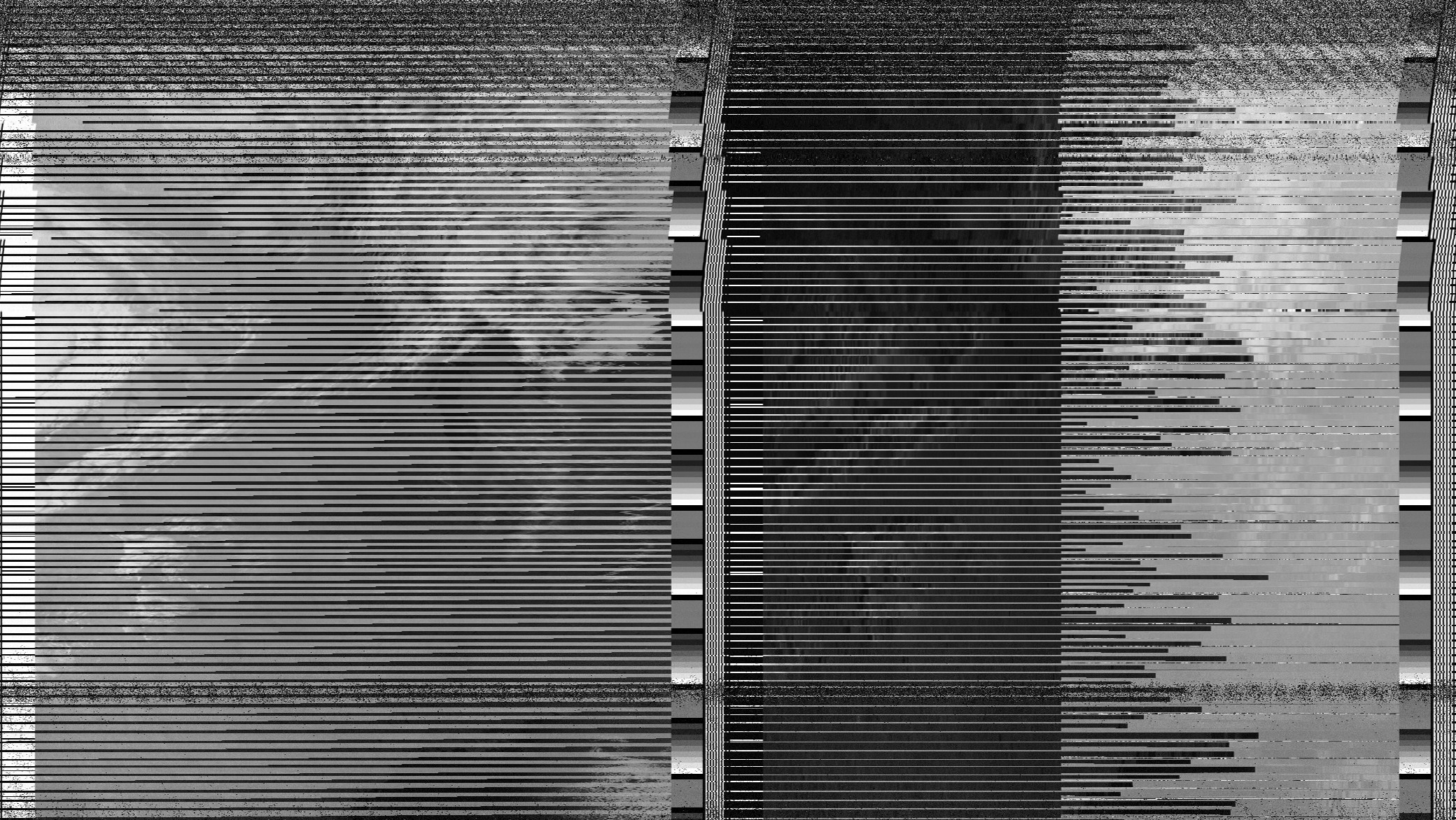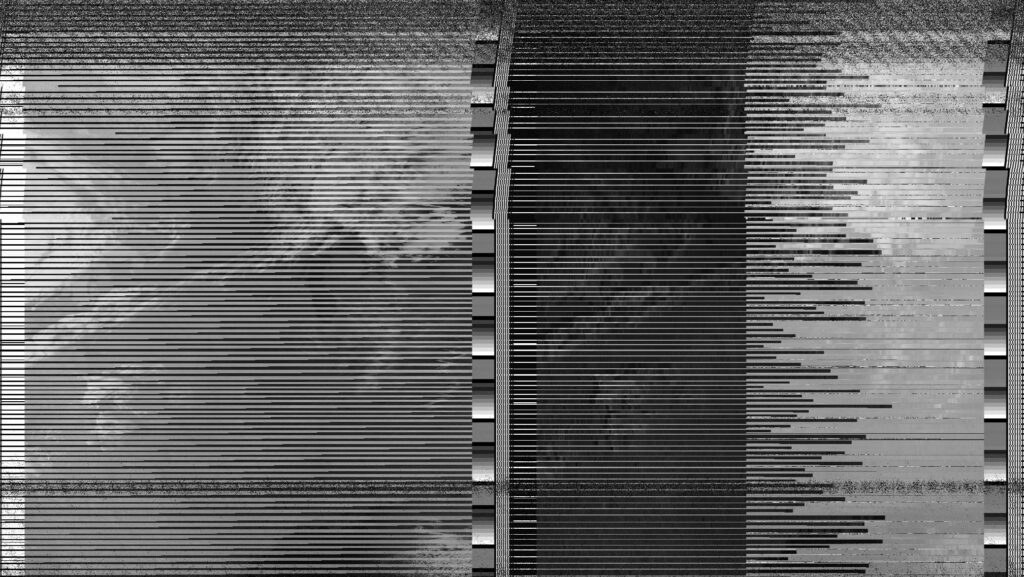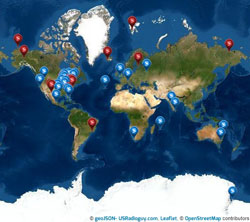![]()
Updated 08/28/2023
Looks like NOAA 15 AVHRR scan motor is heating up again, Causing some issues with scanning and affecting the APT and HRPT Imagery:

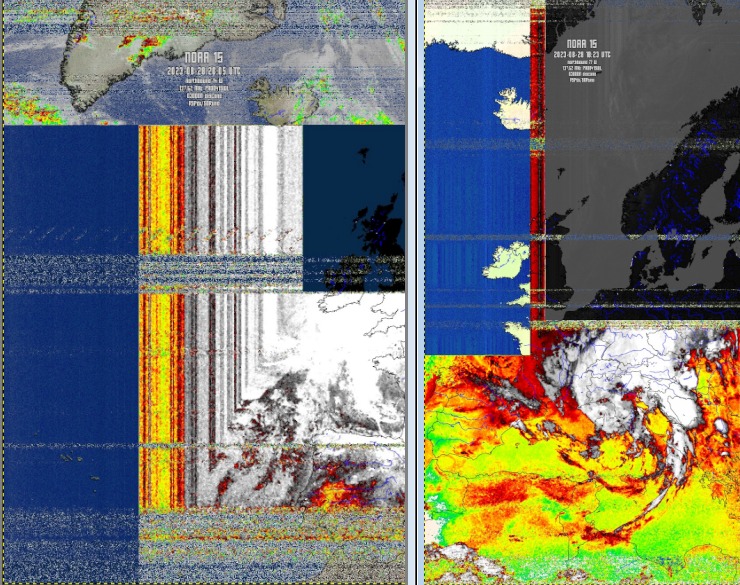
What follows below is an article from October 2022
NOAA-15 AVHRR degraded image data.
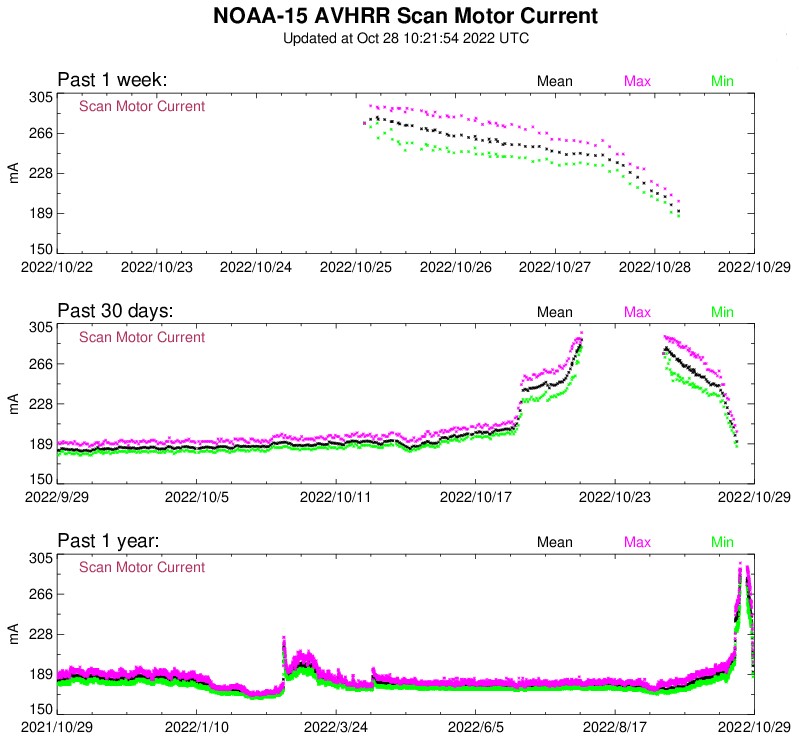
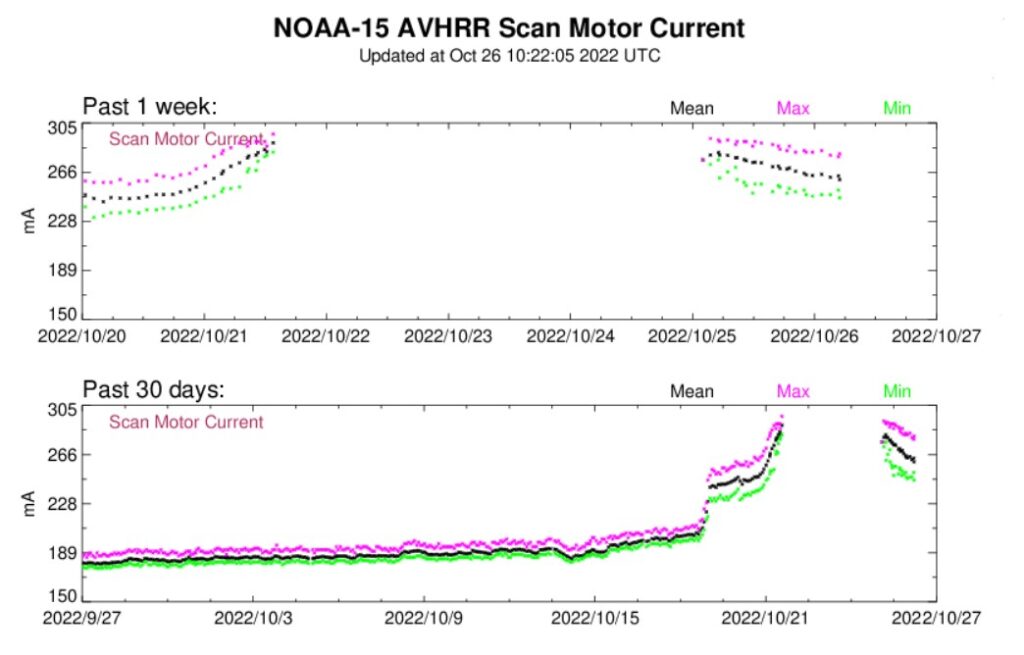
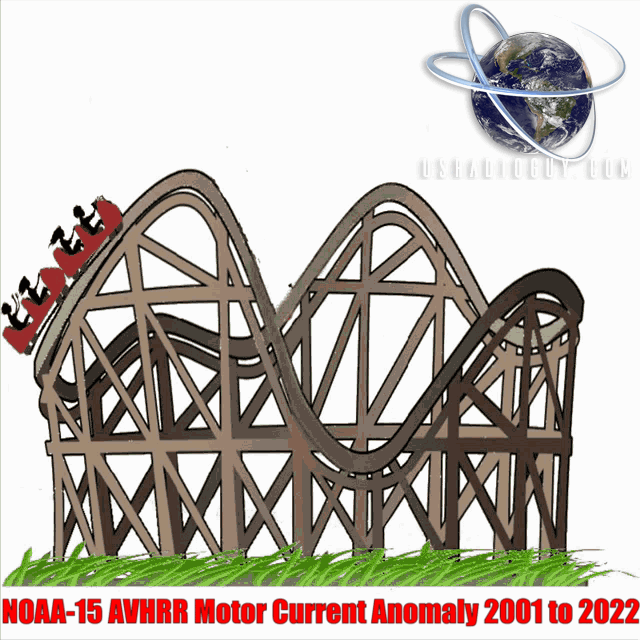
Starting on October 18th, 2022, NOAA-15 suffered an issue with its AVHRR Scan Motor. This is not the first time it has happened to NOAA-15. In fact, it has happened several times, AVHR scan motor current surges have caused issues with the AVHR since 2001. In 2015 the AVHR motor stopped entirely, then was restarted by ground controllers adjusting the voltages to the motor. Since 2015 the status of the AVHR on NOAA’s status page has been yellow (Operational with limitations (or Standby)).
The Advanced Very High-Resolution Radiometer (AVHRR) is a cross-track scanning system with five spectral bands having a resolution of 1.1 km and a frequency of earth scans twice per day. A major AVHRR/3 improvement was the installation of a larger external sun shield to the scan motor housing on the NOAA satellites, to reduce sunlight impingement on the sensor and to stabilize its illumination and thermal regimes. But, After 20 plus years…this cycle of cold/hot and constant motor use takes its toll. The leading theory is that the lubricant used in the motor has degraded. The AVHRRs are designed to operate at an ambient temperature of 286–288 K. In past events the sensor was commanded to cool-down and warm-up again. Which seemed to have freed up the motor.
The image below clearly shows the effect of the AVHR scan motor stepping or stuttering. Engineers will attempt to reset the AVHR motor, BUT, this can only be done while the satellite is in the correct position for command and control facilities to receive and transmit commands to the satellite. (Twice a day for 18-25 minutes on average)
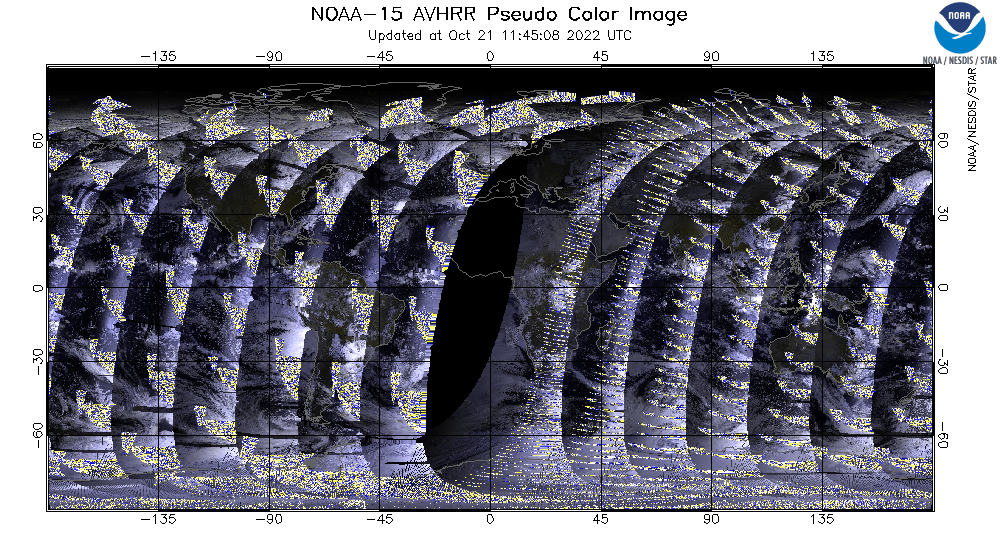
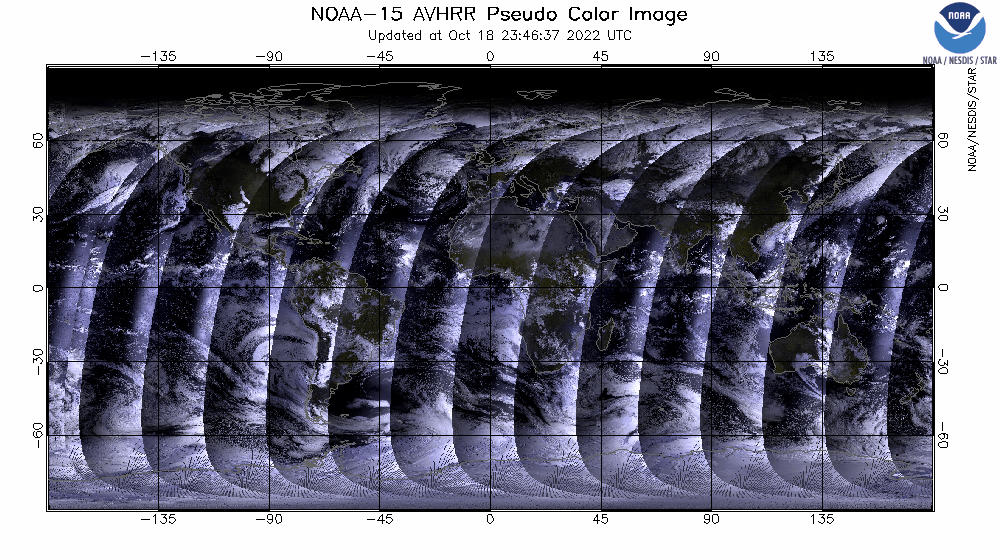
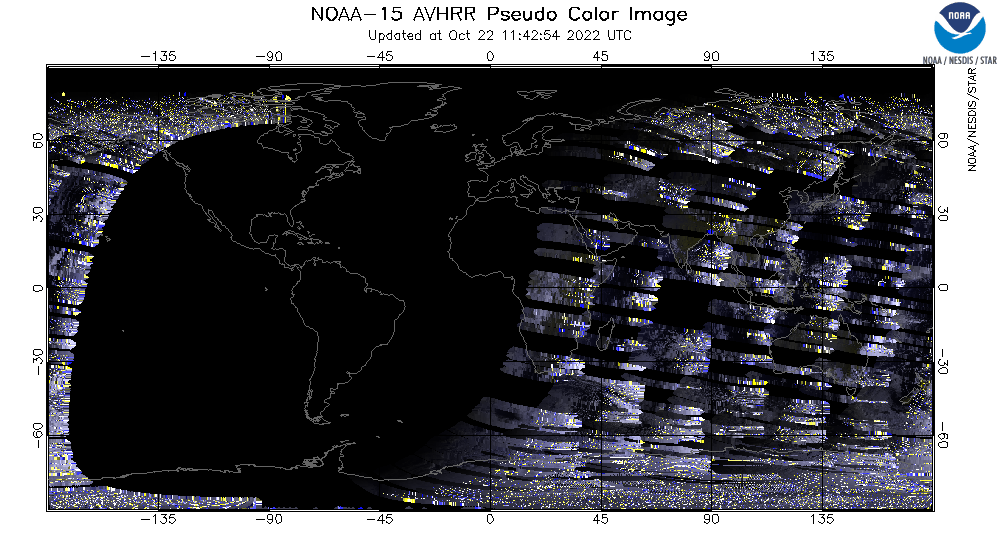
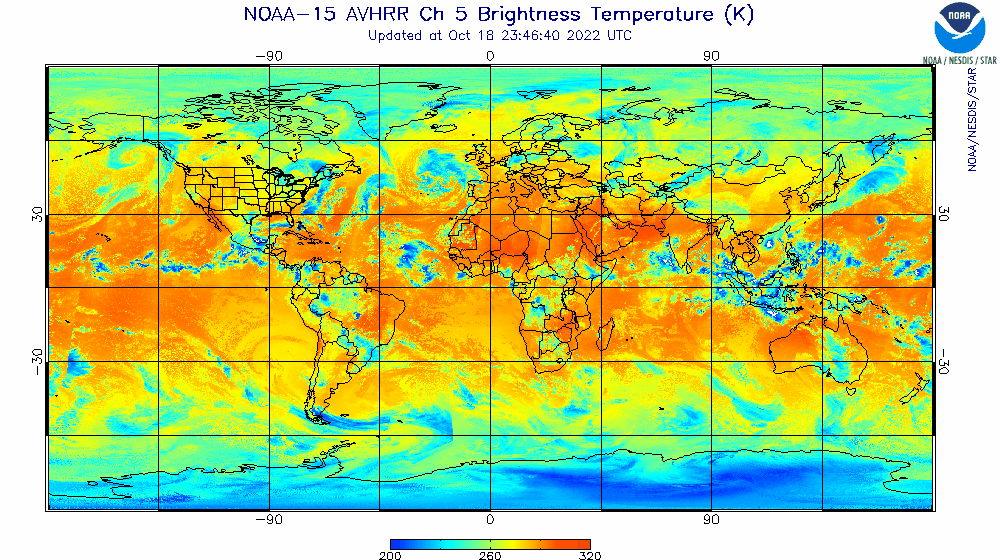
Scan Motor Current spikes seen in 2018 (the Last time the AVHR acted up) and the current-voltage spike in October 2022.

If the AVHR scan motor issue cannot be resolved, NOAA may decide to shut down the AVHR and thereby ending APT imagery. However, NOAA-15 HIRS and The Advanced Microwave Sounding Unit-A (AMSU-A) are still functioning and it can be expected that these will continue to be used by NOAA. AVHRR loss would probably not result in the total loss of the spacecraft.
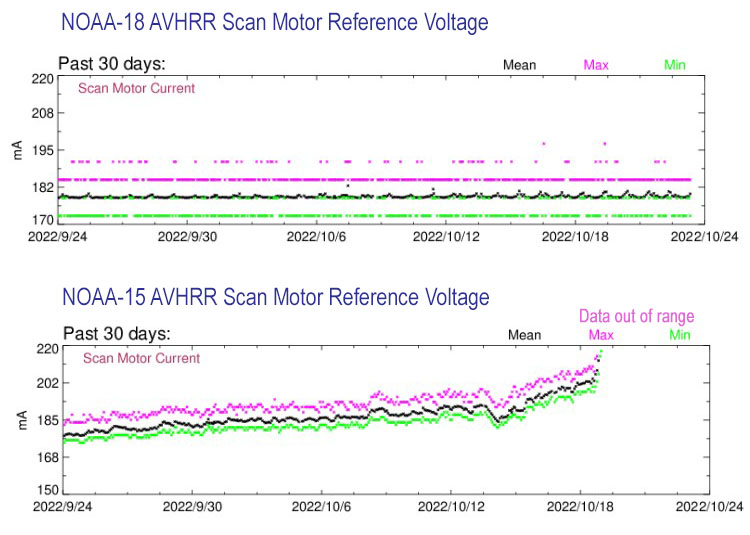
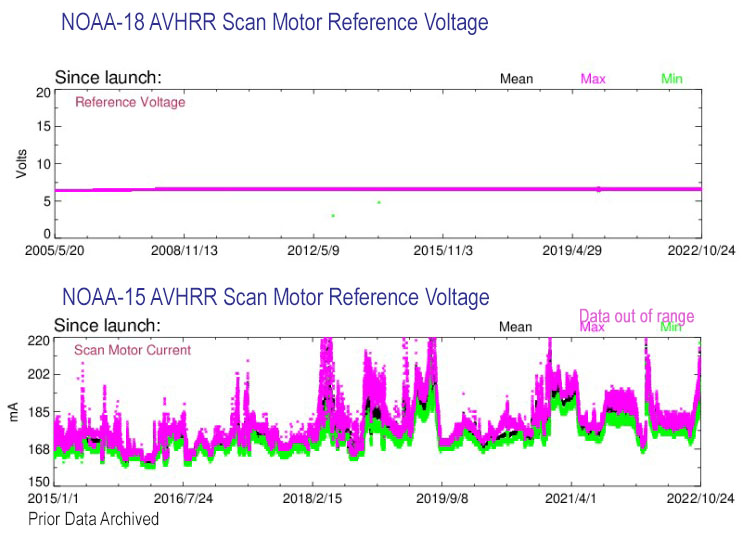
Coincidentally, and not related to the scan motor issue, NOAA signed an agreement with Parsons Corporation to take over the On-Orbit operations of NOAA 15,18,19. I have an article on that here: NOAA 15,18,19 to transition to private On-orbit operations
There has been a lengthy history of AVHRR failure on board NOAA-15 –
On 10 July 2000, there was an apparent failure of the NOAA-15 AVHRR scan motor. HRPT and APT image data were missing through July 12, orbit 11250. On this orbit, AVHRR synchronization was restarted and HRPT and APT image data were temporarily resumed. AVHRR synchronization was again lost on 22 July on orbit 11395. Tests during December 2000 and January 2001 have shown that lowering the temperature of the instrument has restored a degree of stability. Beginning 20 March 2001, NOAA began to resynchronize the AVHRR once daily at 0730 UTC. The AVHRR has shown the ability to retain synchronization for longer periods with this daily reset. During the time of the resynchronization, there is a very brief disruption in all data in the HRPT transmission. When the AVHRR is in synchronization, usable images may be obtained. When the AVHRR synchronization is out of limits, images are unusable. HRPT transmitter will remain ON; the APT transmitter turned ON at 1611 UTC, 15 March 2001. At 1820 UTC, on 30 October 2000, the NOAA-15 AMSU-A Channel 14 failed and is no longer usable.
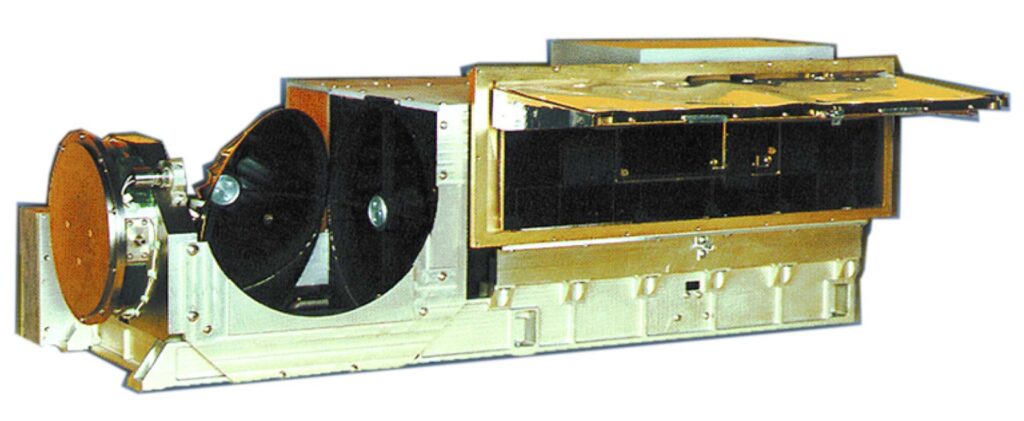
solar (visible and near-IR) energy and radiated thermal energy from land, sea, clouds,
and the intervening atmosphere. Scanning is accomplished by a continuously rotating scan mirror that is directly driven by a brushless DC motor. This six multispectral channel radiometer started its first operational flight on NOAA-15, which launched in May 1998.
